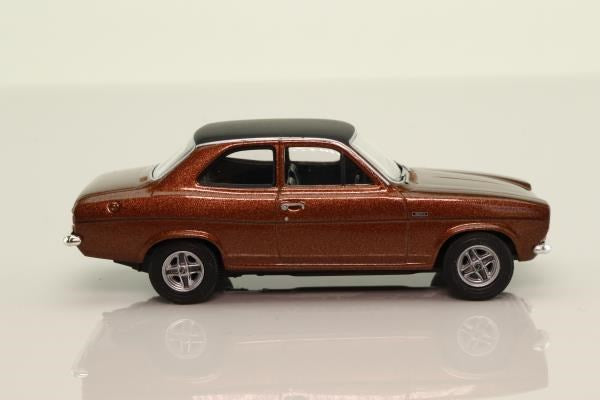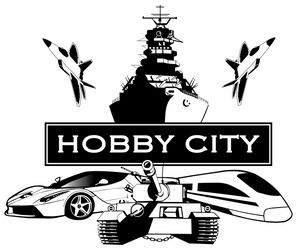
Corgi VA09526 1/43 Escort Mk1 Mexico Copper
Corgi VA09526 1/43 Escort Mk1 Mexico Copper
|
The Mark I Ford Escort was introduced at the end of 1967, replacing the successful, long-running Anglia. It was produced until 1974 when it was replaced by the Mark 2. The Escort was a commercial success in several parts of Western Europe, but nowhere more so than in the UK, where the national bestseller of the 1960s, BMC's Austin/Morris 1100 was beginning to show its age, while Ford's own Cortina had grown, both in dimensions and in price, beyond the market niche at which it had originally been pitched. The Escort competed with the Vauxhall Viva, and from early 1970 the Rootes Group's Hillman Avenger. The Escort had conventional rear-wheel drive and a four-speed manual gearbox, or three-speed automatic transmission. The suspension consisted of MacPherson strut front suspension and a simple live axle mounted on leaf springs. The Escort was the first small Ford to use rack-and-pinion steering. The Mark I featured contemporary styling cues in tune with its time: a subtle Detroit-inspired "Coke bottle" waistline and the "dogbone" shaped front grille – arguably the car's main stylistic feature. Similar Coke bottle styling featured in the larger Cortina Mark III launched in 1970. There was a 1300GT performance version, with a tuned 1.3 L Crossflow (OHV) engine with a Weber carburetor and uprated suspension. This version featured additional instrumentation with a tachometer, battery charge indicator, and oil pressure gauge. The same tuned 1.3 L engine was also used in a variation sold as the Escort Sport, that used the flared front wings from the AVO (Advanced Vehicle Operations) range of cars, but featured trim from the more basic models. Later, an "executive" version of the Escort was produced known as the "1300E". This featured the same 13" road wheels and flared wings of the Sport, but was trimmed in an upmarket fashion with wood trim on the dashboard and door cappings. A higher performance version for rallies and racing was available, the Escort Twin Cam, built for Group 2 international rallying. It had an engine with a Lotus-made eight-valve twin camshaft head fitted to the 1.5 L non-crossflow block, which had been bored out to 1,558 cc. This engine had originally been developed for the Lotus Elan. Production of the Twin Cam was phased out as the Cosworth-engined RS1600 (RS denoting Rallye Sport) production began. The most famous edition of the Twin Cam was raced on behalf of Ford by Alan Mann Racing in the British Saloon Car Championship in 1968 and 1969, sporting a full Formula 2 Ford FVC 16-valve engine producing over 200 hp. The Escort, driven by Australian driver Frank Gardner went on to comfortably win the 1968 championship. The Mark I Escorts went on to become one of the most successful rally cars of all time. The Ford works team was practically unbeatable in the late 1960s / early 1970s, and arguably the Escort's greatest victory was in the 1970 London to Mexico World Cup Rally, driven by Finnish legend Hannu Mikkola and Swedish co-driver Gunnar Palm. This gave rise to the Escort Mexico (1598cc "crossflow"-engined) special edition road versions in honour of the rally car. Introduced in November 1970, 10,352 Mexico Mark Is were built using bodyshells using additional strengthening panels in high stress areas making them more suitable for competition. In addition to the Mexico, the RS1600 was developed with a 1,601 cc Cosworth BDA which used a Crossflow block with a 16-valve Cosworth cylinder head, named for "Belt Drive A Series". Both the Mexico and RS1600 were built at Ford's Advanced Vehicle Operations (AVO) facility located at the Aveley Plant in South Essex. As well as higher performance engines and sports suspension, like the Mexico these models featured the strengthened bodyshell. Ford also produced an RS2000 model as an alternative to the somewhat temperamental RS1600, featuring a 2.0 L Pinto (OHC) engine. This also clocked up some rally and racing victories; and pre-empted the hot hatch market as a desirable but affordable performance road car. Like the Mexico and RS1600, this car was produced at the Aveley plant using the strengthened bodyshel |
